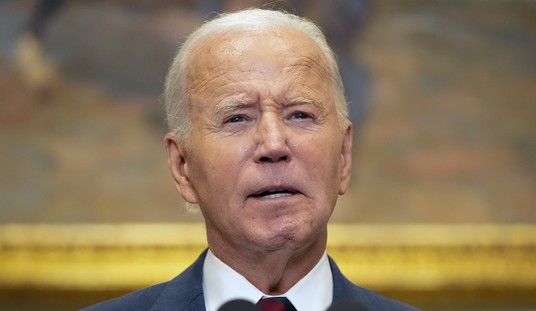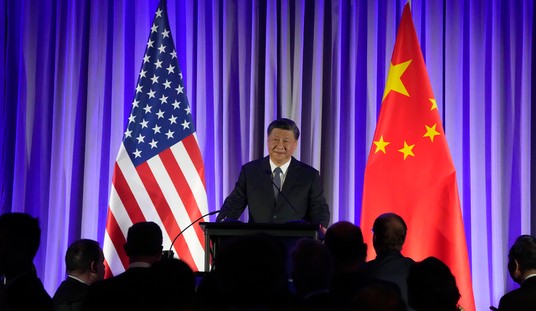After touring the National Holocaust Museum in Washington, DC, Dr. Helen asks a great question:
Why do so many of the left tout Nazism as a creation of the right when there were so many traits of the left embedded in it’s theology?
As I wrote a year ago:
I’m one of those folks who view both the Soviet Union and Nazi Germany as twin creatures of the totalitarian left. (See this article for a sense of closely the two ideologies are intertwined.) I view the political spectrum, as it proceeds from left to right, as going from totalitarianism to moderate liberalism (which in this case, I’m defining in the broadest sense of the word, running from JFK to Reagan), to libertarianism, to, finally, anarchy. As this biography of Friedrich (no relation to Salma) Hayek says:
English intellectuals–promoters of central planning–claimed socialism was the opposite of Nazism, but Hayek insisted that socialism, communism and Nazism were part of the same collectivist trend which had gathered momentum during the 20th century.
[UPDATE 8/13/05: John Lukacs’ The Hitler of History also explores these connections in detail.]
So how did Nazism come to be an ad hominem attack on the right? Jonah Goldberg, probably based on research he’s been doing for his upcoming book, recently wrote:
The classic Marxist definition of fascism, put forward in 1935 by Georgi Dimitroff, holds that fascism is “the open terroristic dictatorship of the most reactionary, most chauvinistic and most imperialist elements of finance capital.” This notion that the Nazis were the fighting brigade of the rich and powerful has had a remarkable shelf life. The only problem, as countless scholars have demonstrated over the years, is that this isn’t true. Nazism was a popular movement that crossed all class and regional lines in Germany. Hitler was hardly a tool of the rich, and to the extent he was helped by a few wealthy individuals, the fact remains that the Nazis achieved their electoral success by portraying themselves as defenders of the little guy and of national pride.
It’s no coincidence that several elements of Nazism–not the least of which were the eugenics programs that ultimately led to the Holocaust–flowed directly from the preceding and very socially liberal, Weimar Republic. The Nazis simply dialed up the amps on those ideas to 11–and then some.
And while German National Socialism and Italian Fascism weren’t identical ideologies, it’s worth revisiting David Ramsay Steele’s “The Mystery of Fascism“, which begins with 18 year old Benito Mussolini moving to Switzerland in 1902 “starving and penniless. All he had in his pockets was a cheap nickel medallion of Karl Marx”, and eventually, being supplied plans of May Day parades by Stalin, “to help him polish up his Fascist pageants”.
It’s also worth revisiting the very interesting portrait that Edward Feser painted of an ideal candidate in election year 2004:
As a Bush re-election later this year looks increasingly likely, some left-wingers worry that Howard Dean is too risky a candidate to put up against a popular President. There is, of course, the obvious comparison to McGovern and the fear that a true believer may inevitably be a sure loser. There is also the worry that Dean may not in fact be so true a believer in the first place: he did support Newt Gingrichs Medicare reforms, after all, and has been a little too cozy with gun rights advocates; might he not betray the Left in order to appeal to Middle America? Is the prospect of another Clinton the price to pay for avoiding another McGovern?
A solution for the Leftist might lie in turning one’s historical eye back before either Clinton or McGovern, to find a model who was both genuinely radical and a solid electoral success. Then the task will be to find a modern politician who fits this paradigm as closely as possible. Who might serve as such a model?
One example stands out. Who was he?
He had been something of a bohemian in his youth, and always regarded young people and their idealism as the key to progress and the overcoming of outmoded prejudices. And he was widely admired by the young people of his country, many of whom belonged to organizations devoted to practicing and propagating his teachings. He had a lifelong passion for music, art, and architecture, and was even something of a painter. He rejected what he regarded as petty bourgeois moral hang-ups, and he and his girlfriend lived together for years. He counted a number of homosexuals as friends and collaborators, and took the view that a man’s personal morals were none of his business; some scholars of his life believe that he himself may have been homosexual or bisexual. He was ahead of his time where a number of contemporary progressive causes are concerned: he disliked smoking, regarding it as a serious danger to public health, and took steps to combat it; he was a vegetarian and animal lover; he enacted tough gun control laws; and he advocated euthanasia for the incurably ill.
He championed the rights of workers, regarded capitalist society as brutal and unjust, and sought a third way between communism and the free market. In this regard, he and his associates greatly admired the strong steps taken by President Franklin Roosevelt’s New Deal to take large-scale economic decision-making out of private hands and put it into those of government planning agencies. His aim was to institute a brand of socialism that avoided the inefficiencies that plagued the Soviet variety, and many former communists found his program highly congenial. He deplored the selfish individualism he took to be endemic to modern Western society, and wanted to replace it with an ethic of self-sacrifice: As Christ proclaimed love one another, he said, so our call — peoples community, public need before private greed, communally-minded social consciousness — rings out! This call will echo throughout the world!
The reference to Christ notwithstanding, he was not personally a Christian, regarding the Catholicism he was baptized into as an irrational superstition. In fact he admired Islam more than Christianity, and he and his policies were highly respected by many of the Muslims of his day. He and his associates had a special distaste for the Catholic Church and, given a choice, preferred modern liberalized Protestantism, taking the view that the best form of Christianity would be one that forsook the traditional other-worldly focus on personal salvation and accommodated itself to the requirements of a program for social justice to be implemented by the state. They also considered the possibility that Christianity might eventually have to be abandoned altogether in favor of a return to paganism, a worldview many of them saw as more humane and truer to the heritage of their people. For he and his associates believed strongly that a peoples ethnic and racial heritage was what mattered most. Some endorsed a kind of cultural relativism according to which what is true or false and right or wrong in some sense depends on ones ethnic worldview, and especially on what best promotes the well-being of ones ethnic group.
Who was he? He certainly sounds like the ideal presidential candidate of a Pacifica Radio Network listener or Mother Jones subscriber — or, to make a more timely reference, a contributor to MoveOn.org. It can only add to his appeal for such people that he was a target of American and British bombing raids and had to flee to the safety of an underground hide-out. And he was none other than Time magazines Man of the Year for 1938: Adolf Hitler.
Surprise!
OK, it was a cheap trick; but I trust I didnt get anyones hopes up too much. That der Fuhrer’s biography has as much of a resemblance as it does to that of the typical granola-munching whale-saver is a fact of no small import, however.
Feser’s piece was titled, “The Mustache on the Left“.
Update: John J. Ray has a long essay on the topic that’s worth reading.










Join the conversation as a VIP Member